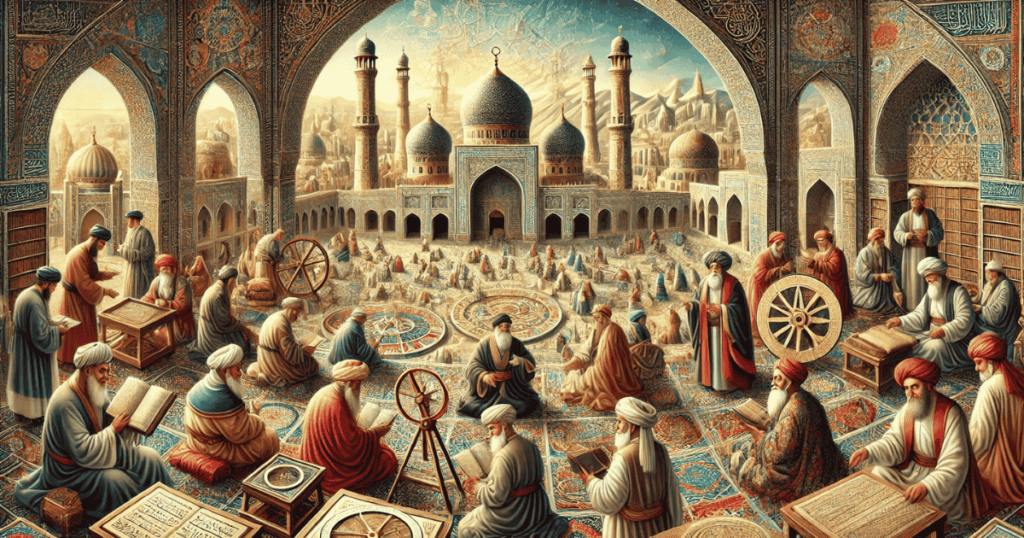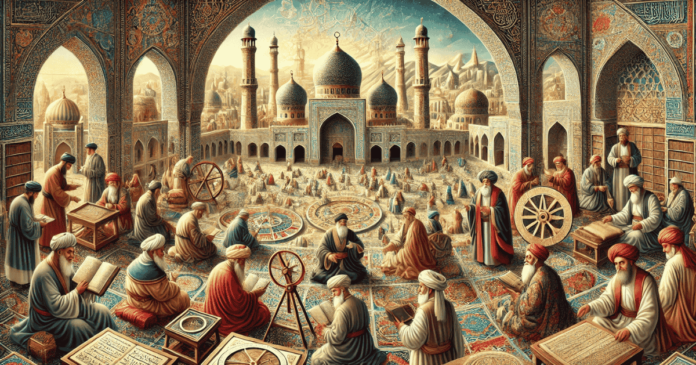Islamic Golden Age
A fascinating hadith from the Prophet Muhammad (peace be upon him) foretold a great conflict between Muslims and people with “red faces, flat noses, small eyes, and shield-like faces.” This description matches the Mongols, who later posed one of the most significant threats to the Islamic world. After the Prophet’s death, the Muslims rapidly expanded their empire under the Rashidun Caliphate (the rightly-guided caliphs: Abu Bakr, Umar, Uthman, and Ali), transforming into a global superpower within just thirty years. However, the decline of the Rashidun Caliphate led to the rise of the Umayyads, who ruled for 90 years, extending the empire to an even greater extent.
Umayyad Caliphate: An Arab Dominated Rule
The Umayyads’ rule was characterized by Arab supremacy, where non-Arabs had little or no status. Arabs held the highest ranks, and intermarriage between Arabs and non-Arabs was practically impossible. This social division became a source of unrest and eventually led to the downfall of the Umayyad Caliphate. The Abbasids, descendants of Prophet Muhammad’s uncle Abbas, overthrew the Umayyads, giving birth to the Abbasid Caliphate. This era is considered the golden age of Islam, marked by unprecedented intellectual and scientific advancements.
Abbasid Caliphate: The Islamic Golden Age
The Abbasids ruled from Baghdad, transforming it into the world’s most powerful city and a beacon of knowledge. They established the House of Wisdom, the largest library of the era, which became a center for translating ancient texts into Arabic. This initiative made Arabic the world’s most dominant language, much like English today. The Abbasids were the first to fund scientific research, resulting in breakthroughs in mathematics, astronomy, medicine, and arts. Among the great scholars of the time was Al-Khwarizmi, who introduced algebra, which remains integral to modern science.
The arts also flourished during this period, with works like Thousand and One Nights, inspiring stories like Aladdin, Ali Baba, and Sinbad, which continue to influence modern entertainment. Despite their success, the Abbasid Empire eventually declined due to internal strife and the rising power of the Seljuk Turks, who gradually took control of the caliphate’s military and political affairs.
The Mongol Threat: A Prophecy Fulfilled
Islamic Golden Age: During the decline of the Abbasid Caliphate, the Mongols emerged as a terrifying force. Led by Genghis Khan (Temujin), the Mongols created the largest contiguous empire in history. Known for their ruthless military tactics, Genghis Khan’s armies devastated vast territories, including the Quarzmi empire, whose ruler had foolishly provoked Genghis by executing his ambassador. In retaliation, Genghis Khan’s forces destroyed cities, massacred millions, and created pyramids from the heads of their victims.
Genghis Khan’s campaign against the Muslims began a century-long conflict, with the Mongols rapidly decimating Muslim empires and leaving only a fraction of the population alive. The Quarzmi Empire, covering present-day Afghanistan, Uzbekistan, and Tajikistan, lost nearly 18 million of its 20 million population.
The Fall of Baghdad: The End of the Abbasid Caliphate
In 1258, Genghis Khan’s grandson, Hulagu Khan, led the Mongols to Baghdad, the heart of the Islamic world. At this time, Muslims were deeply divided, more focused on internal debates than defending their land. Hulagu’s forces destroyed Baghdad, killing the caliph and reducing the city to ruins. The Tigris River turned red with the blood of the slain and black from the ink of burned books. The Mongols obliterated the House of Wisdom, throwing its priceless manuscripts into the river, marking the end of the Islamic Golden Age.
Islamic Golden Age The Turning Point: The Battle of Ain Jalut
After the fall of Baghdad, the Mongols seemed unstoppable. They aimed to capture the holy cities of Mecca and Medina, but the Mamluks of Egypt, led by Sultan Qutuz and General Baybars, resisted. The decisive Battle of Ain Jalut took place in 1260 in Palestine, at the very location where Prophet David (peace be upon him) had defeated Goliath centuries earlier. Against all odds, the Mamluks defeated the Mongols, halting their westward expansion permanently. This battle marked the first major defeat of the Mongols and ensured the survival of the Islamic world.
Islamic Golden Age: Mongols Convert to Islam

Islamic Golden Age: Despite their conquests, the Mongols eventually embraced Islam. The descendants of Genghis Khan in the Islamic territories became Muslim, and the once feared invaders were absorbed into the cultures they had conquered. This transformation from destroyers to preservers of Islamic heritage remains one of the most remarkable episodes in history.
The rise and fall of empires, the internal conflicts, and the ultimate redemption through faith and unity highlight the enduring resilience of the Muslim world. Today, the legacy of the Abbasids and their contributions to science, culture, and civilization continues to influence the world.

